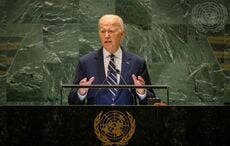A letter from a former friend of rebel leader Michael Collins sold at auction on April 30, 2013 for $5,000. In the letter Collins’ former friend offered to betray Collins to the English in the beginning of the Irish War for Independence.
Henry Quinlisk had a grudge against Collins after the Irish leaders had denied him further funds after he had lost money at the racetrack. Quinlisk decided to inform on Collins in 1919 after the English declared the first Dail illegal.
Quinlisk’s letter was only briefly referred to in two historical accounts and the complete contents of the letter were unknown. The letter resurfaced after it turned up in the private papers of woman with connections to Cumman na mBan, a women’s organization that participated in the Easter Rising, the Irish War for Independence, and fought with the anti-Treaty Republican forces during the Irish Civil War.
The letter was sent from 21 Gardiner Place, Dublin to the Under Sec, Dublin Castle. It was marked “secret” and “very urgent.”
The Irish Examiner quotes that Quinlisk wrote in the letter, “Sir, I have been forced by circumstances to write to you. I would have come personally but if I were seen entering the castle my life would perhaps afterward be in danger. I was the man who assisted Casement in Germany, and in coming home I have been connected with Sinn Fein. I have decided to tell all I know of that organization and my information would be of use to the authorities. The scoundrel Michael Collins has treated me scurvily and I now am going to wash my hands of the whole business. If you accept my offer, please send a man, one who can be trusted, to the above address tomorrow evening at four o’clock. I am living there under the name of Quin. I am yours faithfully. H. Quinlisk, late Cpl Royal Irish Regiment.”
Roger Casement had tried to smuggle arms from Germany to assist the 1916 Easter Rising, but the English intercepted the ship carrying the arms just days before the Rising started.
Quinlisk’s letter never reached its destination. It was intercepted at Dublin Castle by one of Collins’ spies. Collins’ forces set up a trap for Quinlisk and he was taken away and shot when he arrived for what he thought was Collins’ arrest.
Quinlisk was born in Wexford in 1895 and lived there until his family moved to Waterford, where he joined the Royal Irish Regiment in 1911. He was captured by the Germans in October of 1914 and was recruited to join Casement’s Irish Brigade, a brigade consisting of Irish prisoners of war training to fight against Britain, in Germany in December of the same year. Quinlisk returned to Ireland after the end of World War I in 1918 and joined Sinn Fein. Because of his membership in the Irish Brigade, he was denied back pay for the time of his imprisonment in Germany and Collins helped him financially. Quinlisk then worked in Dublin until his death.




Comments